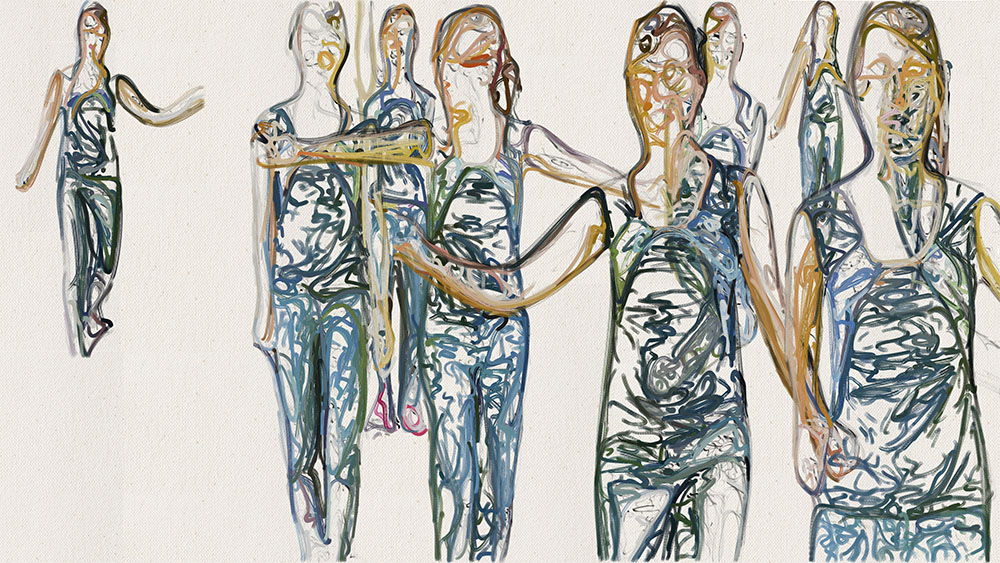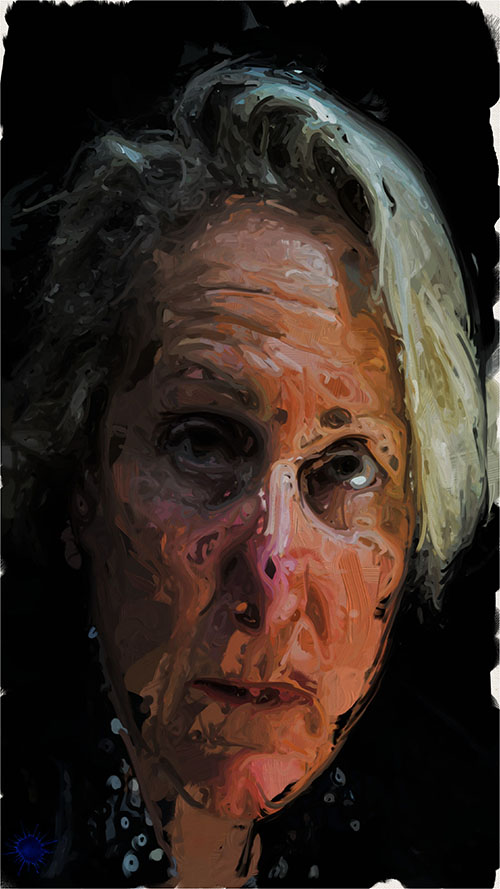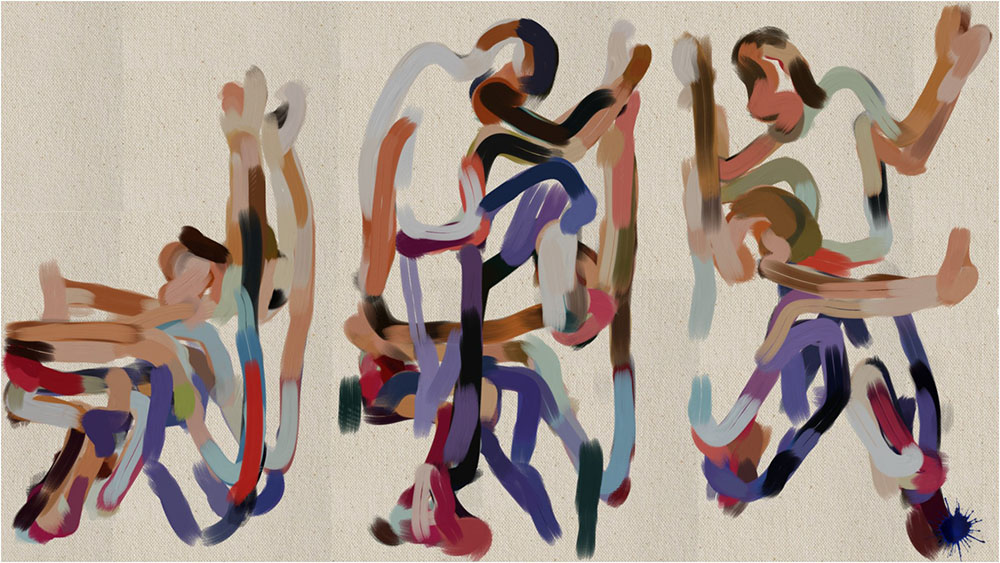Download: ‘Painting’ by Other Means
by David M. Roth

Clive McCarthy’s digital paintings might seem like a perfect way to induce screen-addicted millennials into long-looking – assuming they’ve got 300 million years to spare. That is the estimated time for any of the works in his current exhibition, The Continuation of Painting by Other Means, to move through a complete onscreen cycle. It’s not that his source images move past us at a glacial pace — though some appear to do so — it’s that the permutations enacted on them by McCarthy’s image-altering algorithms are, for all practical purposes, endless. They appear and dissolve in cycles of “drawing” and “erasure” with no hint of how (or whether) they’ll be resurrected. As such, it’s impossible to tell where any of McCarthy’s pieces start or finish; you meet them wherever they happen to be in their multimillion-year cycle. The suspense of waiting to see what develops can throw you into a state of infant-like reverie.

Consider, for example, The Nine Muses, consisting of figures displayed on a 85-inch monitor. They take shape slowly, moving from glitchy skeletal forms to fully fleshed-out figures before being pulled “offstage” in the manner of vaudeville performers, only to be restored through similar stop-start “brushstrokes.” Margie behaves a bit differently, as a series of unreadable strokes that, merge into a pale-faced visage with blotchy skin, the “texture” of which calls to mind similar effects achieved by Chuck Close. Vitruvian Woman, a riff on Leonardo’s iconic 1490 drawing, shows a figure moving through what looks to be a series of yoga poses. Arrangement in Red, Pink and Purple (after Auerbach) M.E.H., a work set deep inside a black box, appears to display only brushstrokes. Leaning in, I felt like I was watching an invisible hand execute calligraphic pirouettes with practiced wrist flicks. If they later turned into something else, I failed to notice as I was trying to keep tabs on the progression of images running across seven video monitors ranging in width from 24 to 85 inches.
In this endeavor, McCarthy joins pioneering digital painting figures like Harold Cohen and Simon Colton and a short list of Bay Area engineer/artists, including, most notably, Jim Campbell — but with some crucial differences. Where Campbell aims to show how much information can be removed from video images before legibility evaporates, McCarthy’s ever-shifting montages make no grand statements about the nature of perception; they simply grab attention by activating our hard-wired impulse to look at anything that moves. While figures and faces appear to be his ostensible subjects, the real interest rests in how they morph from one state to another, speed being the primary variable. (That is why still images don’t begin to convey the impact of what you see in the gallery.) The effect is a cross between florid graffiti writing and the behavior of Etch A Sketch, a toy popular in the 1960s that allowed children to perform line drawings on a handheld tablet filled with aluminum powder.
These randomly generated images derive from his own photos (mostly of friends or models) or Internet downloads. For example, images for 100,000 Portraits of Strangers came from government databases. Whatever the source, public or private, McCarthy feeds photos into an algorithm of his own devising, consisting of 500,000 lines of code that control line, color, facture, motion and much else.

Since I first encountered his works a decade ago, I’ve felt they’d be well-suited to outsized displays like the Times Square Jumbotron. McCarthy has yet to take his experiments that far, but in 2020, he did project several pieces across long walls at the San Jose ICA. One of them, James Joyce’s Ulysses (2019), spelled out the entire text of the novel 60 characters at a time to such mesmerizing effect that the ICA kept an image of it on its homepage for years. Even so, no one, including the artist, pretends that such works stand in for painting. They are clearly simulations.
Here, it’s worth noting that before earning an MFA from SFAI in 2004, McCarthy, a UK native, honed his skills for decades as the lead engineer at Altera, a Silicon Valley chip maker. His art reflects his impressive background and training. As he drolly observed, “If the lights go out, so does the painting. “
# # #
Clive McCarthy: “The Continuation of Painting by Other Means” @ Qualia Contemporary Art through May 14, 2024.
About the author: David M. Roth is the editor, publisher, and founder of Squarecylinder, where, since 2009, he has published over 400 reviews of Bay Area exhibitions. He was previously a contributor to Artweek and Art Ltd. and senior editor for art and culture at the Sacramento News & Review.
Looks fascinating and a must see show for me. Thanks for highlighting it.